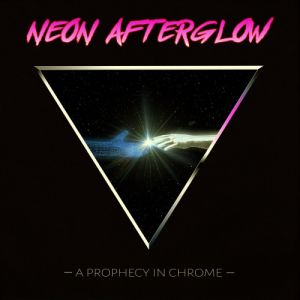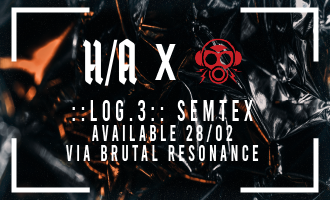Neon Afterglow - A Prophecy In Chrome
This review was commissioned. However, it bears no weight on the score or decision. All reviews are written from an unbiased standpoint.
The first thing that’s completely apparent when listening to Neon Afterglow’s debut EP “A Prophecy in Chrome” is that they hit the stereotypical checkmarks of what’s considered to be a retro themed artist. Neon in the name of the project with coloring suited to the spectrum and a sci-fi space odyssey unraveled in a synth heavy fashion. So, the aesthetic is overdone and tiring, that’s for sure, but it’s not necessarily the cover that makes the book, so they say. It’s what’s on the inside. But before diving fully into Neon Afterglow’s debut, let’s get to know them a little bit.
Neon Afterglow is formed by Luis and Simon. Considered a side-project by them, the duo play in another, unrelated project. They wanted to explore the cheesy side of 80s music, as they both share a passion for it. What began as small recordings eventually turned into what became Neon Afterglow: a nostalgia riddled passion project. Residing in Frankfurt Germany, they present their debut “A Prophecy in Chrome” to the world.
The question that must be answered, then, is whether or not Neon Afterglow is able to brighten up the world with their take on retro music. The answer is both yes and no. While the duo is able to produce music with a focus on synthpop and synthwave, it’s nowhere near the best of the genre, but nowhere as low as the worst of the worst, either. The first song that hits is ‘The Last Starfighter’. And everything sounds as it should; twilight synths, soft drum pads, and an extraterrestrial vibe. But it’s nothing I haven’t heard before; produced well, but generic. The vocals aren’t great, either. With a high-pitched voice do the vocals become washed out by all the other noise – or perhaps its due to poor annunciation. There is an instrumental version of this song attached to the end of the album, so if you prefer it without the vocals, you can catch that instead.
‘China White’ is another that fits the bill of classic retro-futurism with a synthpop vibe. A bit of funk, a couple of samples in between, but nothing that really solidifies it as a must-have on any playlist that I would create. Again, it’s produced well, but there’s naught to rave about. ‘Beyond Human’ takes a rougher approach with gritty electronic guitars, and I’ll admit I was impressed by the solo within the song, but other than that it was fairly standard.
My favorite song on the album has got to be ‘Interlude’. It’s a short piece, lasting one-minute and forty-some seconds, but within that track is so much instrumental tension. As if someone has just landed a personal shuttle on a foreign planet and is about to exit; as if a crew of hardened smugglers has just come across an object in the middle of space that they should never have seen. So on and so forth. It’s an exercise in creativity and one that I enjoyed. The title track attempts to follow in a similar cinematic vein, and it does so with soft synths, but not nearly as much energy. The last song on the album is a ‘Credit Roll’, ending our tale. An outro that, once again, sparks a warm reception, but nothing further than that.
Neon Afterglow certainly has the gusto to become a good synthpop / synthwave band, but perhaps focusing less on the cheese and tropes of the genre, they should focus on creating something unique to stand out from the crowd. Six out of ten.
Dec 11 2022
Off label
Official release released by the artist themselves without the backing of a label.

Steven Gullotta
info@brutalresonance.comI've been writing for Brutal Resonance since November of 2012 and now serve as the editor-in-chief. I love the dark electronic underground and usually have too much to listen to at once but I love it. I am also an editor at Aggressive Deprivation, a digital/physical magazine since March of 2016. I support the scene as much as I can from my humble laptop.
Share this review
Facebook
Twitter
Google+
Shares
Buy this release
Bandcamp
Pankow - And Shun The Cure They Most Desire is available at POPONAUT from 3,95€
Related articles
Ghost Twin - 'Plastic Heart'
Review, May 19 2017
Decent News
Interview, Jan 15 2020
Mechatronic - 'Promises From The Past'
Review, Jan 01 2003
Auxiliary Control - 'Memories of You'
Review, Nov 06 2011
Welle:Erdball
Interview, Jan 01 2003




